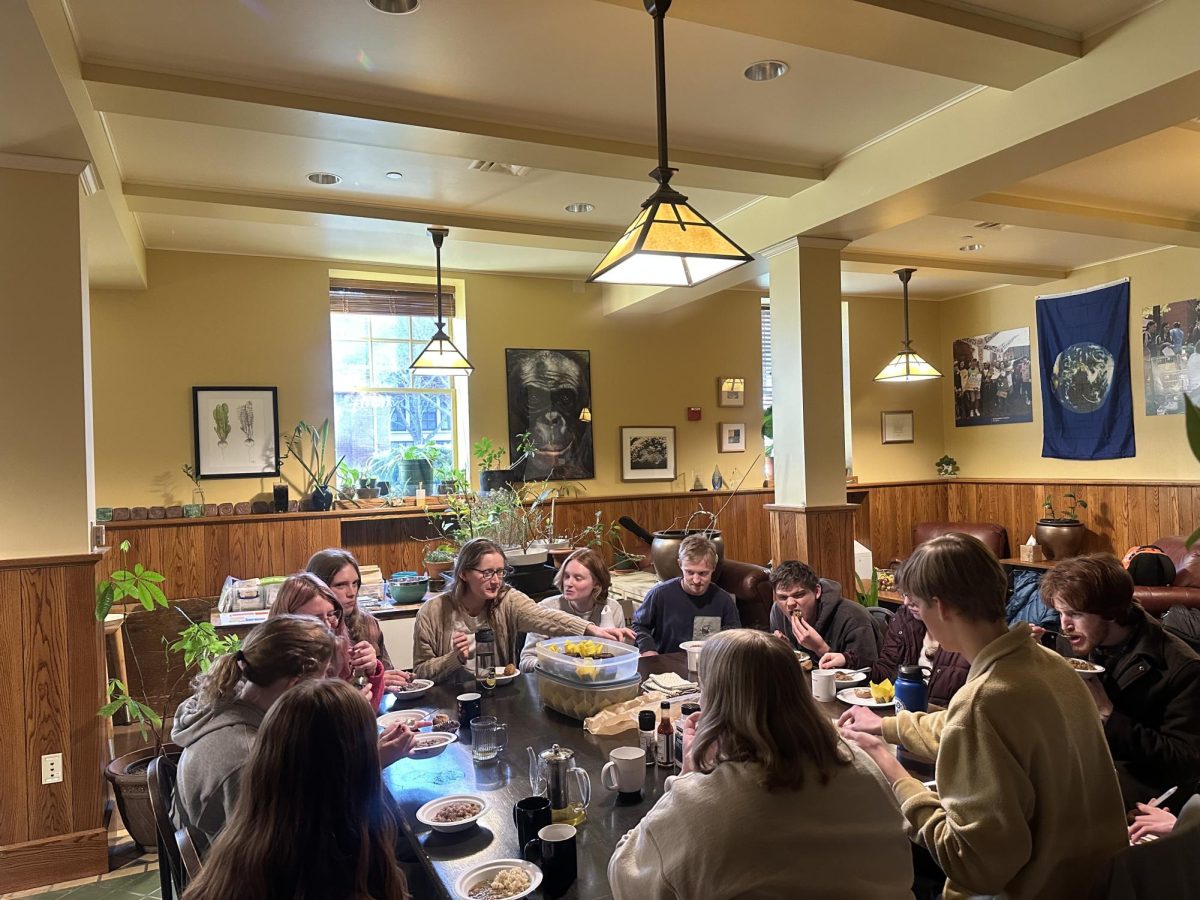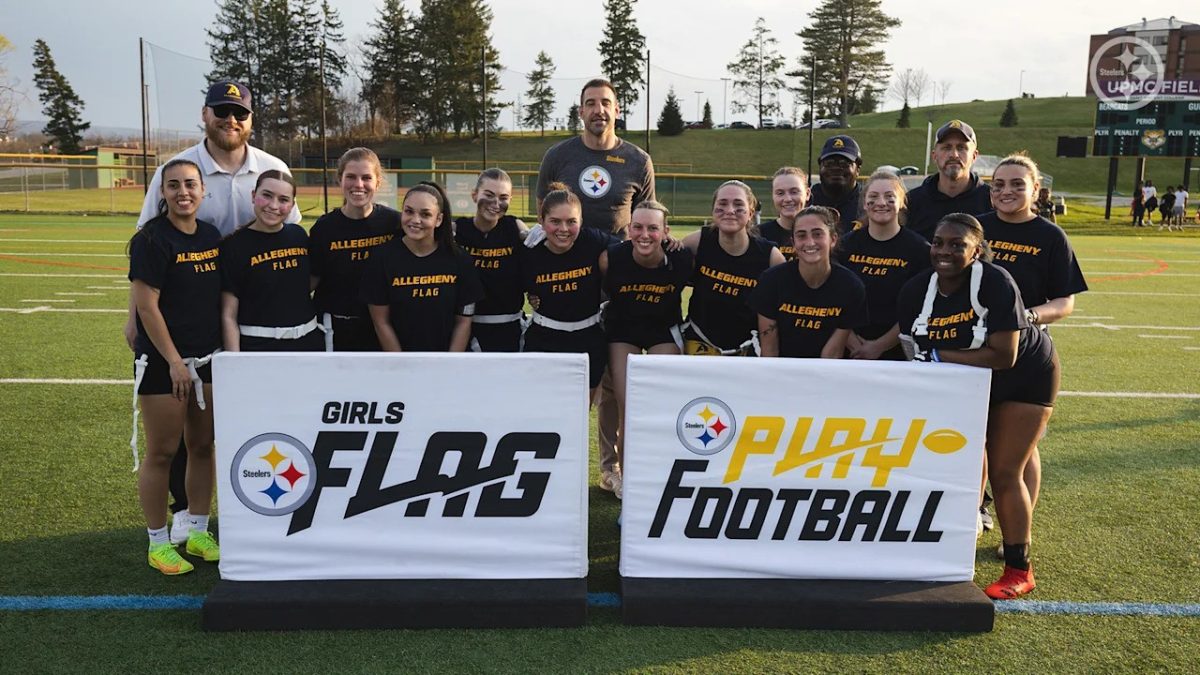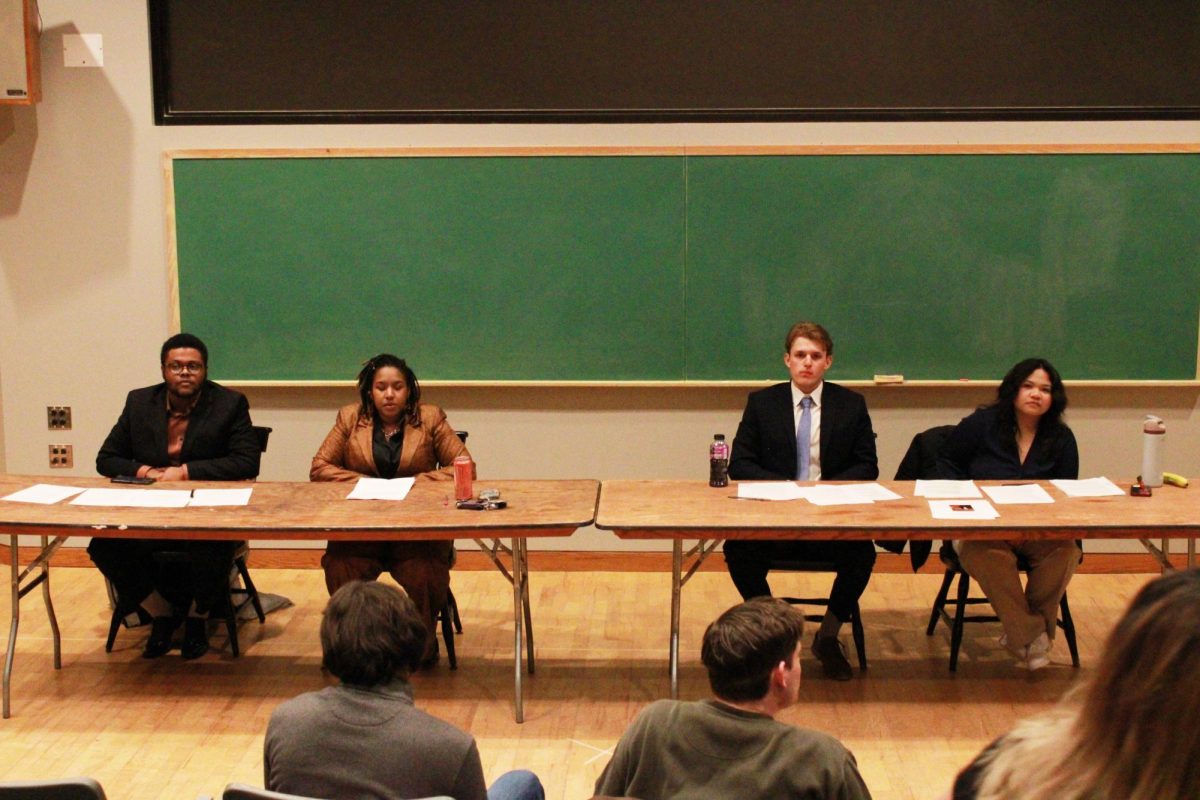According to the results of Allegheny’s October Energy Challenge, the campus decreased its overall energy consumption by 10.39 percent in just one month. However, the Challenge’s focus was not just on reducing energy to save money, but also on making the campus community more conscious of its impact on the environment. Kelly Boulton, Allegheny’s sustainability coordinator, believes the Challenge’s goal was achieved thanks to imaginative efforts made by many different student groups on campus.
“One of the values that Allegheny stands for is responsibility,” Boulton said. “We wanted to teach students to be more aware and more responsible about their energy usage.”
Dr. Eric Pallant’s Environmental Science 110 class has played a huge role in helping the campus to decrease its overall energy usage. His class’s biggest assignment this semester, completed in groups of roughly 3-4 students, was to select a building or department on campus and promote the Energy Challenge to try to get it to reduce energy. “The students were very participatory,” said Pallant.
The class got creative to get the campus’s energy consumption down.
“I encouraged them to use something I call ‘fun theory,’” Pallant explained. “The most successful way to make people change their environmental behavior is to make it fun. The least successful way is to send out e-mails reprimanding people, making them feel guilty.”
In order to encourage students to do a little bit less laundry, there was a night when “The Office” was shown in Brooks Hall, accompanied with free popcorn. To participate, students had to show up with a pair of dirty jeans to prove that they would go one more day without doing laundry. This way, less people were doing laundry and less TVs were being used. Instead, everyone was in one place, watching the same show, hanging out with their friends.
Another project carried out using Pallant’s “fun theory” encouraged people to use drying machines less. Students calling themselves Energy Ninjas left clothespins and clotheslines outside apartments in North Village, knocked and ran away.
Phi Kappa Psi also made a big impact on the Energy Challenge, dropping its energy usage by 25 percent.
The students who promoted the Energy Challenge to the Phi Kappa Psis attended a chapter meeting and suggested ideas that might help lower the house’s energy usage, like using more energy-efficient light bulbs, holding chapter meetings in the dark and playing Xbox together as a group. After each week that the house’s energy consumption decreased, Pallant’s ES students brought the fraternity brothers treats. At the end of the Challenge, the brothers had decreased their energy usage by 25 percent. Their big reward was a home-cooked dinner of margaritas and tacos.
Many other campus organizations contributed to the Energy Challenge as well. GFC hosted a dimly-lit, unplugged acoustic open-mic night. Allegheny Student Government held a meeting in the dark. At Brooks, Parkhurst Dining dimmed the lights for a meal on Halloween. Students for Environmental Action and the Astronomy Club collaborated for a stargazing event. A game of nighttime hide-and-go-seek in the dark was held in Ravine.
“There has definitely been shifts in behavior, so now what we need to do as a community is keep things up,” Boulton said. “Winter break is coming up, which is a great opportunity to see if we can maintain our energy reduction.”
Eco-Rep Kritika Kapadia, ’11, voiced support for a “winter shutdown”, when everyone turns off their appliances before leaving for break.
“We are hoping to try [the shutdown] for Thanksgiving break first,” she said. “I’m not sure to what extent or how often we can measure the meters when the competition is not ‘on’…but we definitely need to constantly put reminders out there to be conserving energy all the time.”
Now that the Energy Challenge is over, Boulton plans to speak with local solar installers about investing the nearly $6,000 that was saved in some solar panels on campus. “The panels will be small at first, but we will work with the installers to build something that can be built on each year until we slowly build up a decent array,” she said. The panels will likely be installed somewhere central, like the campus center, Wise Center, or library.









